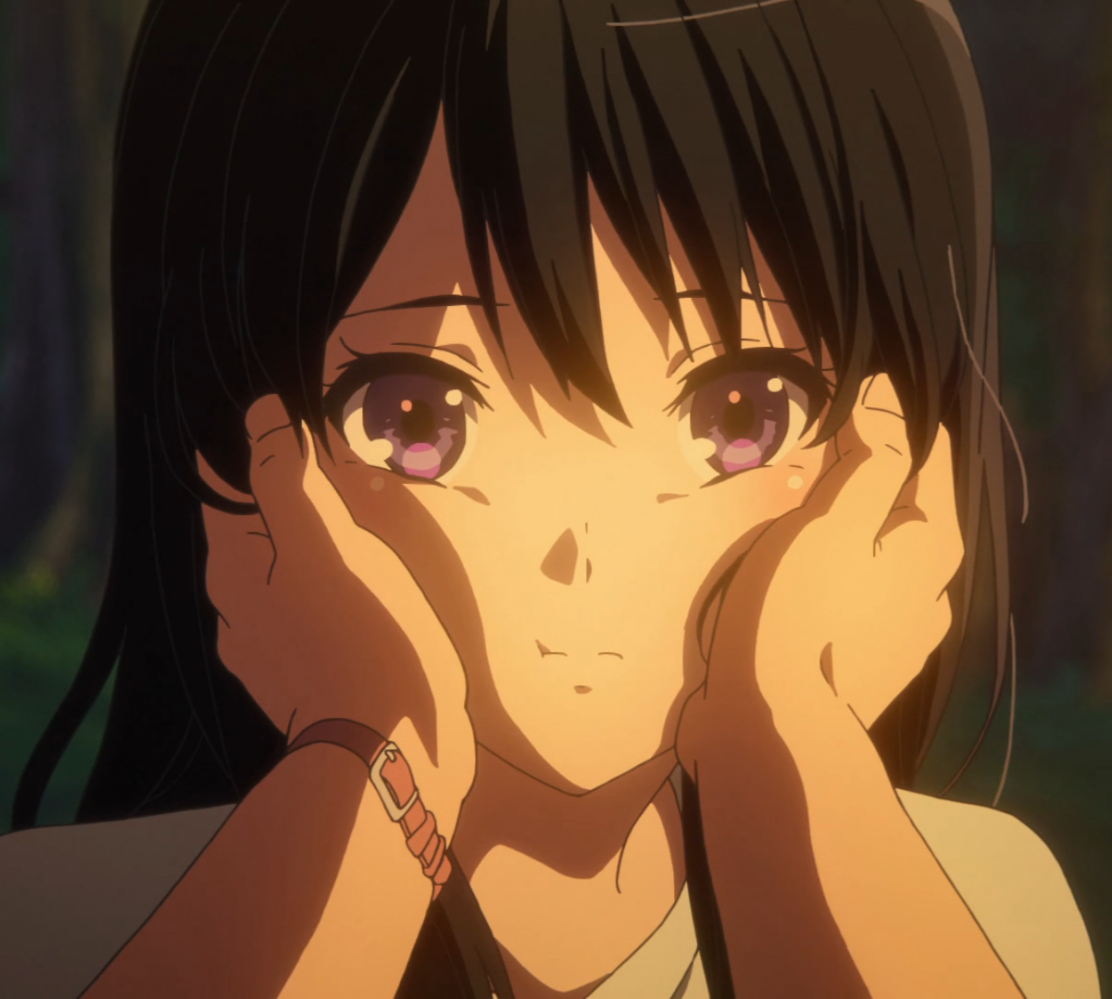
To reiterate once again: The core essence of Monogatari is absurdity. Because of the amount of dialogue meant to convey that sense of absurdity is too overwhelming for an anime adaptation, the sense of such intense absurdity had to be translated over in other ways. SHAFT found this way to be converting it into the mise en scene: the things we see in frame.
The settings of Bakemonogatari the book are often never too detailed to the point of conveying a true sense of what the setting should be. The world in which these characters live in is up to interpretation, and so the creators of the anime interpreted that the world shouldn’t be burdened by physical realities—such as the existence of bystanders. Instead, we find ourselves in vague ideas of locations like “a shrine” or “an abandoned cram school”, with the physical landscape of the area becoming subject to the content of the conversations being held in them.
In the Mayoi Snail chapter of the story, Araragi and Senjougahara find themselves conversing on a park bench in the middle of an intriguingly designed playground. Around them are very simple, primary-colored railings and a suspicious lack of playground equipment. As their conversation progresses, we cut rapidly to various depictions of the characters playing on suddenly appearing children’s rides—a seesaw, a roundabout, and a really cool rail bike thingy. Each of these discontinuous shots emphasizes the aspects of their conversation and relationship dynamic. The roundabout (otherwise known as merry-go-round) is spherical and has Senjougahara sitting atop as Araragi pushes it from below. This illustrates Senjougahara’s status as above the world and Araragi being beneath her as a lowly grunt. On the rail bikes, Senjougahara cruises effortlessly in front as Araragi frantically pedals to keep up, conveying their contrasting natures of coolness and complete lack-there-of. As for the seesaw, I believe that just goes to illustrate their continued back and forth.

The point that ties all of these things together is that the scene was edited in a hasty, ridiculous fashion. Usually we’d expect a conversation to simply be cut between medium close-ups of the character talking, but with Monogatari we instead get all sorts of shots and angles, each with increasing nonsensicality. It’s fun, it’s crazy, and it doesn’t make physical sense: It’s absurd. This is the studio translating the absurdity of its source material into what we see.
And that’s not where it ends. I still haven’t explained how Araragi’s train of thought is imbued into the anime, but it’s actually through the opposite of process of what I had just elaborated on. The park scene is what is known in film as discontinuous editing—editing that doesn’t focus on capturing the natural flow of a scene. Most editing is meant to not draw attention to itself. As a viewer, we’re often not supposed to notice a cut from one person to another—we’re just supposed to notice that the characters are talking to each other. And so, the way we understand what’s on Araragi’s mind (outside of his inner monologue) is through basic continuous editing techniques…or rather, one specifically: Eyeline match.

Eyeline matches are cuts that takes us from a shot of a character looking at something to the thing that the character is looking at. It is one of the very first things you will ever learn in film school. Usually this is done with just a close-up of a character, showing their head and the direction in which they are looking. In the Monogatari series, this technique is made just a little more absurd by having these eyeline matches start with extreme close-up of only a character’s eye—mainly Araragi. Every cut from his eye we see exactly what he is focusing on in the moment, and when he blinks we see a frame that just says “black scene” in Japanese. Sometimes we witness reflections in his eyes, like Senjougahara’s chest as she walks towards him. All this happens constantly, providing us with a steady flow of thought to be inferred.
This is by no means where the anime’s cleverness ends, but I think they make my point: There’s a lot more to anime (and film and television) adaptations than what we are physically told. It’s what we see and what it means that make a video adaptation something special, something that the original book could never be. And that’s part of what I believe is the goal of any good adaptation: Being something that the original can’t, and still be true to what the original is—which is subjectively defined, of course, but would likely be better as an honest attempt rather than an ignorant guess. Thanks for reading.
